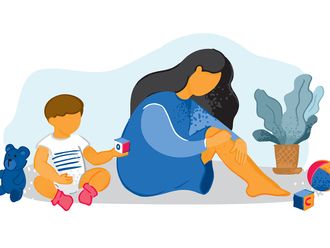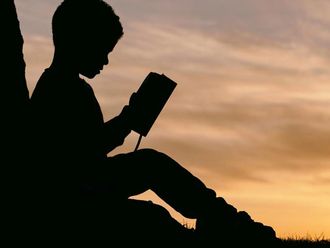
Playing on sandy beaches. Climbing trees. Picking up stones and sticks on hikes and bringing them home. The splashing in muddy puddles, and the walks in the rain. If you experienced this bliss in childhood, then your parents followed the Nordic secret of friluftsliv (pronounced ‘Free-Loofs-Leaf’). I know that’s quite the mouthful, but it simply means, outdoor life.
It’s a Scandinavian parenthood motto: Let your children embrace Nature.
Many parents in the UAE swear by it too. Dubai-based Houda Naji’s children, Sofia and Julia, now aged 14 and 10, have spent their childhood walking and bicycling through Danish forests. “When we used to live in Denmark, eight years ago, my children would walk through forests, bicycle, trek, spot animals and birds,” recalls Naji, a Moroccan national and owner of a digital agency.
Michael Faurholdt Friis, another Danish expat, recalls the "forest kindergartens" in Denmark, a type of preschool education, which is held exclusively outdoors. The children are encouraged to learn, explore and play in a forest-like environment. "They would love spending the day outside, and making their own toys from branches," he says. It was pure bliss, as he remembers. "It's good for their mind and body. They're so much more social," recalls Friis.
They might not be in Denmark anymore, but both of them still find a way for their children to be with Nature in the UAE. It’s sometimes as simple as walking around their green neighbourhood. “They love smelling flowers and petting stray animals here,” says Naji.
Many parents want to ensure that their child experiences the same outdoor bliss that they did. “We were raised barefoot, running around in parks and on the beach,” says Lynn Kolesky, a South African national and Abu Dhabi-based schoolteacher. “I think it helps the child to understand how they interact with the world. So in the winter, I like taking my kids out for evenings in the park. In summer it might be difficult, but occasionally I still do,” she says.
Some parents like Canadian expat and child counselor Mariana Elizabeth, likes taking her children for trips to Fujairah, cycling treks to Jebel Hafeet and trips to Hatta. “They love the sights of rocky mountains. It makes them feel rather adventurous,” she says. “So we plan family trips to different places every weekend, far out of the city. They plan cycling competitions, imagine all sorts of treasure quests, and collect random twigs or stones,” says Elizabeth, mother to two girls, aged ten and eight.
‘Children need movement’
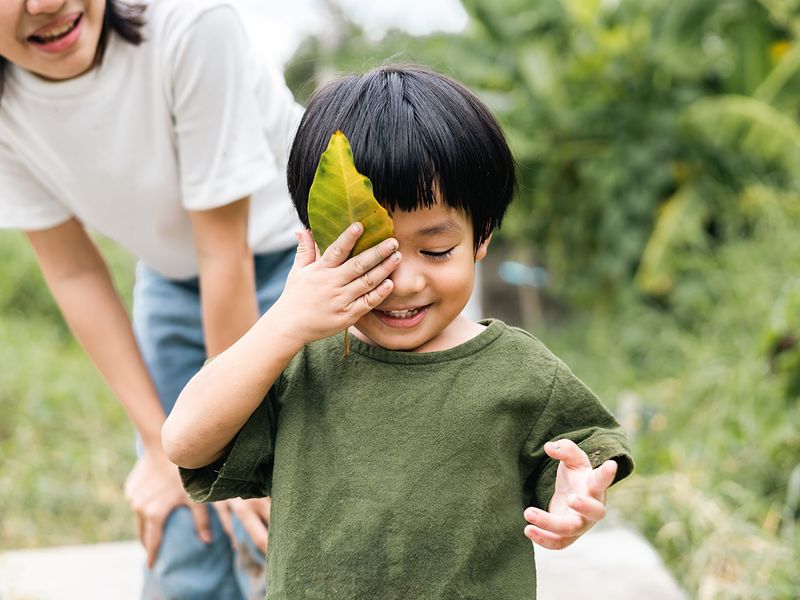
As a child, I found it cathartic to sit in the mud for hours and imagine that I was crafting works of art. In reality, they were just balls of mud that I would tell anyone who listened that they were laddoos, an Indian sweet. As horrified as my parents were at the sight of a muddied child every day, they still never stopped me from playing outside. In fact, they would agree to hold a mud ball and ask me to make more.
Priscilla Joan, a Dubai-based couple and family therapist, refers to this outdoorsy behaviour as holistic. “It’s holistic for the body, mind and soul. This movement in Nature keeps their senses active, and that’s why playtime is essential,” she adds. It’s not just for the sake of some sunshine and Vitamin-D; children need that time with Nature to rejuvenate their sense.

Being around Nature is holistic for their body, mind and soul. This movement in Nature keeps their senses active, and that’s why playtime is essential...
Otherwise, they are just “slumped” at home as she explains. Being consistently stationary could lead to struggles with moods later, and possible depressive anxiety problems later in life, she says.
Being with nature curbs anxiety, and they find different ways to engage with Nature. “It keeps them busy and moving. Playing with mud and splashing through muddles is cathartic for them. If they stay in indoors and just keep watching their screens, their anxiety rises. Lack of movement and sedentary behaviour leads to them being idle, which allows the build-up of anxiety,” says Joan. There is a sense of sensory stimulation when they’re outside, she says. They need to experience new smells, sounds feel the touch of flowers, grass for their mental, physical and cognitive well-being. Being outside also encourages their sense of curiosity and wonder
. Many parents agree with this, including Sumit Augustine, a Dubai-based Public Relations professional. "The more time children spend outdoors, the less likely they are to be angry and aggressive. They learn how to engage with others, and can burn more energy," she says.
Dubai-based Shalini Pokhriyal notices how "happy and expressive" children get when they're outside. "They remain focused, and it's a joyful experience. It pushes us to encourage children play outside," she adds/
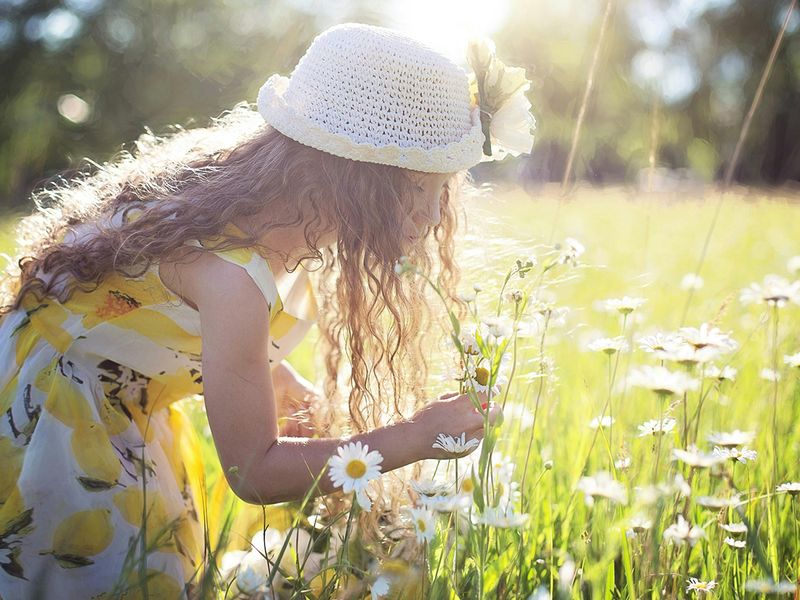
Bushra Abbasi, from Abu Dhabi, notices the little changes in her five-year-old son, who has played in parks for the past four years. “He doesn’t have much of an interest for screens and barely spends time on it. He also loves playing sports now, especially tennis. So we started his tennis coaching,” she says. Moreover, there is a growing sense of curiosity, as he observes the world around him, according to Abbasi. “He has always been inquisitive, so I enjoy answering his questions on the way to the park and back home,” she says.
‘Everything is filled with wonder and magic’
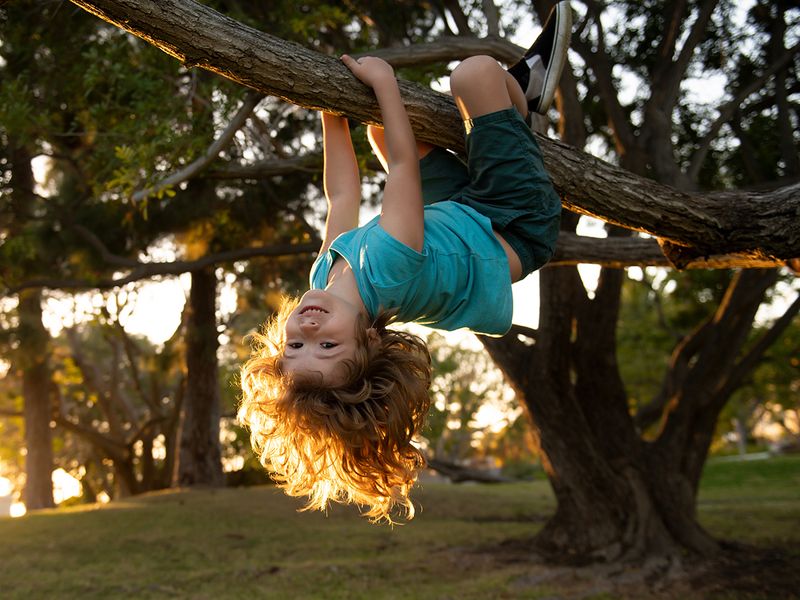
As an adult, you might find nothing interesting in watching a line of ants. For kids, it is an entire world altogether. There are infinite possibilities. It gives them a chance to imagine an entire novel-like tale about six ants marching in a line.
“Children learn many things from just being in the natural environment,” adds Elizabeth. It boosts their creativity and imagination as they engage in storytelling and share with parents.
“My kids enjoy pretending they’re on some treasure quest, whenever we go to Jebel Hafeet for a trip,” says Elizabeth. “By the end of the day, they have experimented with every possible fantastical element for their tale, including witches, wizard and pirates, you name it. It’s actually a lot of fun to listen to them,” she adds. “Every parent should listen to these stories and be an active participant, as it encourages the child to imagine more.”

Nature has the power to calm their nerves. Children have a sense of curiosity...they engage proactively. They form their own stories and get content to build on...
Everything is filled with wonder and magic for children, says Elizabeth. "For them, everything is filled with wonder. Everything is magical. They love watching the shapes of clouds and imagining that it’s the shape of an animal,” she says. “Their imagination and curiosity acts as their guide, and elevates their experience of spending time outside. When they build forts, or castles in the sand, they are also engaging in a certain kind of problem-solving. Each child’s play matters to them"
Hima Mammen, a Dubai-based family and child therapist, says, "Nature has the power to calm their nerves. Children have a sense of curiosity. They engage proactively. They form their own stories and get content to build on.." She adds that it furthers creativity, as they can craft stories from just pictures.
How to incorporate friluftsliv in your child’s life:
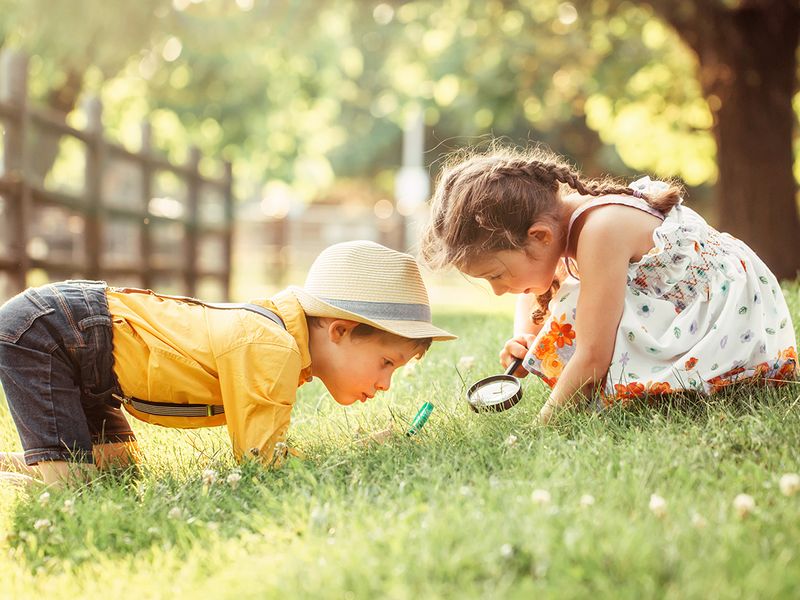
There’s an old Nordic saying: There’s no such thing as bad weather. There are only bad clothes.
Essentially, it’s meant to motivate children to spend time outside, regardless of the weather, unless it’s absolutely out of the question.
Linda Akeson McGurk, the Swedish-American author of The Open Air Life and There’s No Such Thing as Bad Weather, has some suggestions for parents who want to make sure their kids get off their screens and enjoy the outside:
Schedule outdoor time
Go for those morning walks and evenings. As Joan explains, children spend over six hours in school. They need something to re-energise their senses. These walks could serve as healthy, refreshing breaks.
If you are pressed for time, you can combine an outdoor activity with another established habit, explains McGurk in her column on the news site, CNBC. For instance, walk your child to daycare or pre-school instead of taking the car. You can plan a little dinner in the desert too.
Make the most of what you have
As McGurk explains, the golden rule of friluftsliv is to use what you have and what you can without extra effort. It’s alright if you don’t have brooks, rivers and lakes near you. You can still take walks, watch the birds and smell the flowers. Otherwise, you can plan desert trips, as Joan explains.
Don’t let the weather play spoilsport
Children can easily pick up on an adult’s reactions towards rain, wind, or even heat. However, the friluftsliv concept helps people to find something that they love about each season, says McGurk. Let your kids experience of running through pouring rain, puddles or cooling off with a sprinkler on a hot day.



